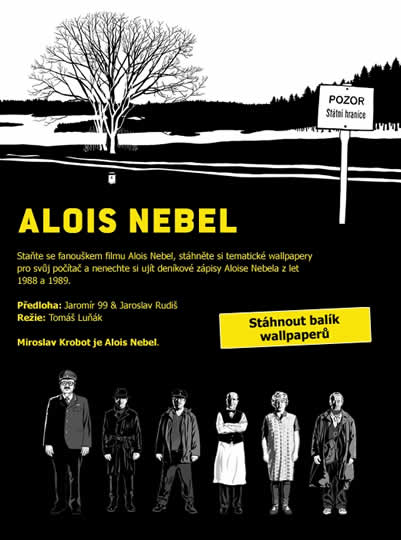Tomás Lunák’s black and white rotoscoped animated feature “Alois Nebel” (the Czech Republic’s official Oscar entry) joins the emerging genre of dramatic animated features: “Waltz With Bashir”, “Waking Life” and the Sci Fi “Renaissance” and “Scanner Darkly” (also rotoscoped.)
Moody deep chiaroscuro compositions add old style dimensional modeling to the story, which looks like old Comic books and is based on trilogy of graphic novels by Jaroslav Rudiš and Jaromír 99. The authors of the Czech Republic’s first graphic novel adapted the screenplay.
Cartoon cognoscenti know that graphic novels were influenced by the Golden Age of American Comics, which were influenced by Hollywood Film Noir, in turn influenced by German Expressionist directors who fled Hitler’s Germany and emigrated to Hollywood.
Set in the Czech-Polish border (the former Sudentenland) during the fall of the Czech regime (1989.) Train dispatcher Alois Nebel follows in his father’s footsteps as the dispatcher in the remote station of Bílý Potok. An inexperienced loner, he prefers his isolated depot to the chaos of the modern world. Haunted by images of wartime central Europe, he is treated in a sanitarium. The silent Alois meets “The Mute” a mysterious character who undergoes shock therapy at the hands of security authorities trying to get information. The Mute  escapes.
escapes.
Released after 10 years in the asylum, Alois goes back to a world changed by the fall of the Soviet Bloc. Traveling to Prague for clarification about his old job, the shy Alois meets the widowed Station Custodian Květa and they begin a prickly courtship.
Alois’s envious colleague Wachek, is the son of the unrepentant Old Wachek, originally a Nazi collaborator, then a fanatical communist who expelled the Germans. Wachek’s past is about to catch up with him.
The fugitive “Mute” appears at Alois’s lonely outpost carrying a revealing photograph of a shared past- evidence of the dark images that fill Alois’s hallucinations.
Lunák’s striking images of flash floods and mountainous storms are reminiscent of Lynn Ward woodcuts in their disturbing power. Lunák’s strong sound and music composition, and powerful images create a dreamlike story haunted by the volatile political changes of the Twentieth Century. Rotoscoping over life action, he captures the moody expressions of his dour characters. The briefest hint of a smile signals the happy end to a love story.

